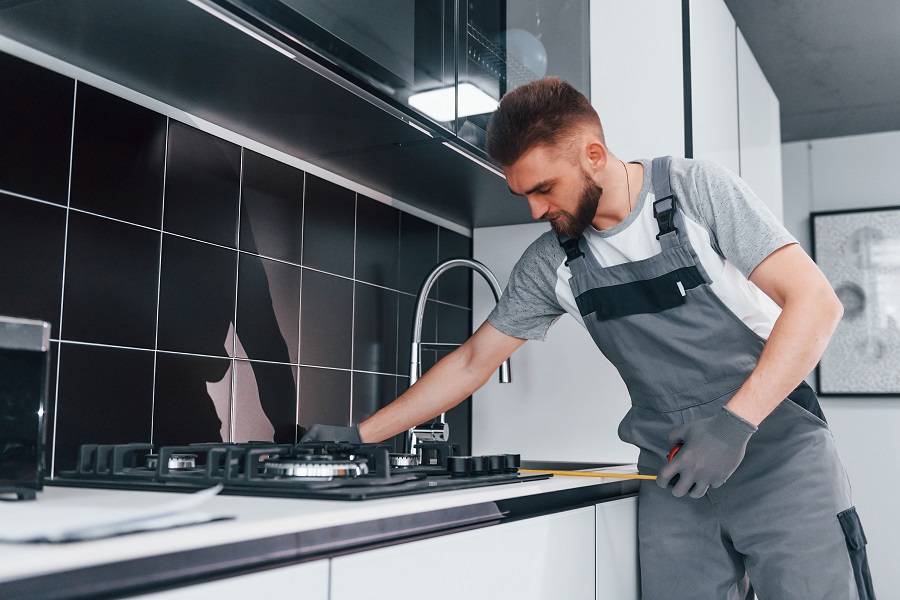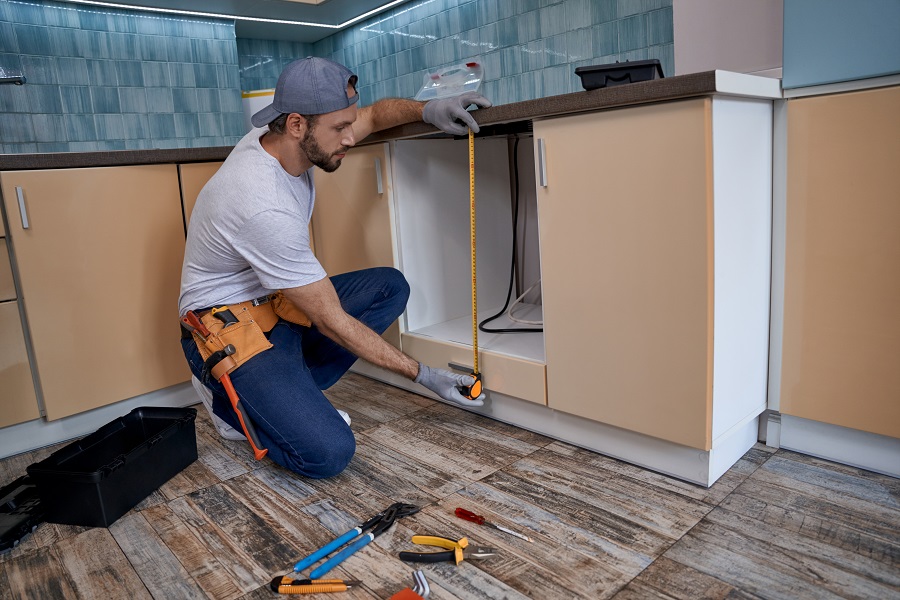Even if it's all about the furniture, designing a kitchen is much more complicated than a bedroom or living room. Because here you have a water source, various appliances, heat sources, and all of this has to be perfectly integrated with the furniture. Cooking is done in the kitchen, so the space must be comfortable, efficient and safe. Design is important, but even more important is that the furniture is easy to use, access to cupboards and appliances is easy, and that mealtimes are not a chore. Over the years, studies have been carried out and rules have been laid down to ensure that the furniture is as ergonomic as possible so that cooking is safe and the time spent in the kitchen is as pleasant as possible. Some of these rules will be discussed below.

Cupboards and worktops should be the right height and size
The height of worktops and cupboards is very important to make working in the kitchen pleasant and safe. The worktop and cupboards should be at a comfortable height that allows you to work without affecting your back or arms. There should be enough space between cabinets positioned facing each other so that they can be used at the same time, and access to overhead poles or hanging cabinets should be easy, without the doer having to stand on their tiptoes.
Ideally, furniture should be sized in relation to the height of the person using the kitchen. Given that more than one person can have access to more than one landing in ordinary kitchens, some general rules have been laid down to satisfy the widest possible majority. The height of floor-standing cupboards is between 85 and 90 cm and their depth is 60 cm. There should be a space of 55-60 cm between the cupboards and the suspended fixtures, the depth of the top cupboards should be 30 cm, and they should be easy to reach. If there are face-to-face cupboards, there must be a minimum distance between them to allow two people to work at the same time.
The sink and hob must be fitted on both sides with 60 cm worktops. If one side is against the wall, the other side must be 90 cm. The minimum height at which the sink is fitted is 85 cm. The space between the oven and the cupboard on the opposite wall must allow the oven door to be fully open and the person cooking to lean over. The height of the table should be 75-80 cm and the chairs should be chosen so that the people at the table can sit comfortably. Find out more about how to choose a table and chairs here. The recommended height is 110 cm for the bar table and 75 cm for the bar stools. Find out how to choose a comfortable and safe chair here.
Triangle rule
One of the most important kitchen design rules is the triangle rule. It sets out the relationship between the working areas in the kitchen and is still as relevant today as it was more than 80 years ago. This rule states that the 3 main areas in the kitchen - the cooking area (the stove), the food preparation area (the sink) and the storage area (the fridge) - form a triangle which, for the kitchen to work properly, must be free. The sides of this triangle must not be less than 110-120 cm and not more than 270-300 cm. It is the open space and short travel distances that ensure efficient kitchen work.
The three zones are also called the warm, wet and cold zones. Warm zone comprises hob, oven and microwave. For efficient operation, they should be placed as close together as possible and with space on either side to allow pots and pans to be placed safely. Wetlands It includes, in addition to the sink, the drainer, the dishwasher and the waste bin. The ideal place for the waste bin is under the sink and access should be as easy as possible. Cold zone It also includes storage cupboards, spice racks, pantry side. If possible, one of the worktops can be placed close to this area to make access to food as easy as possible.

And the installation of the device must follow clear rules
Fryer, hood, oven, microwave, refrigerator, sink are kitchen appliances that cannot be left out. The furniture is designed according to how they will be positioned, and sometimes there are even specially made fixtures for the appliances to be fitted inside. Because the proximity of these appliances can create problems, a few rules have been laid down here too:
- the sink does not sit next to the hob. There must be at least 60 cm between them,
- the hob does not sit next to the fridge. If the kitchen is very small and the position of the fridge is very close to the hob, a small insulating wall should be fitted between them,
- In the case of gas hob, the hood is mounted at min. 65 cm and max. 80 cm high,
- if the hob is electric, the hood can be mounted at a minimum distance of 55 cm. The maximum distance remains the same,
- the dishwasher must be installed at a maximum distance of 90 cm from the sink. The same applies to the washing machine,
- avoid placing the refrigerator near sources of heat (radiator, stove).
Accessibility and ergonomics
Kitchen furniture should be designed and fitted so that it is accessible and meets the needs of those who use it. If there are special requirements in the home, these should be taken into account. In a kitchen used mainly by an elderly person, for example, consideration should be given to how easily drawers and doors work, how easy it is to reach hanging cupboards or in depth bottom cabinets. If the person is less mobile, uses a cane or even a wheelchair, the spaces between cupboards should be wider, the worktop should be at the height needed to work from a chair, and the worktop should fit easily under the table.
An ergonomic kitchen is a comfortable space in which to work easily, safely and efficiently. Hands should not tire while chopping food, backs should not be strained. While standard furniture is already sized according to the above-mentioned rules, customized furniture can be tailored to the customer's needs. This is the surest way to achieve ergonomic furniture that can be used without discomfort or pressure.
Storage spaces
How storage is done is basic to the proper functioning of your kitchen. For example, frequently used items should be stored in easily accessible areas, and heavier items such as pots and pans should be stored at waist height or below. Cupboards and drawers should open simply and easily for easy access.
The organization of the kitchen is mainly up to the person who runs it, but the designer needs to design the spaces and fittings to be useful and easy to use.

I hope you find the information useful. As always, additions are welcome. And if you have any questions or queries, please leave them below in the dedicated space. I will be sure to reply.




































Add comment